MARIPOSA – The shocking robbery was over within minutes, and when it was done, more than a million dollars worth of historic gold and minerals had been stolen, destroying a collection dating back to the California Gold Rush.
What had been taken could never be replaced, and in its absence there was only one thing left to do: catch the bad guys.
From the moment Lt. Jason Daughrity of the California Highway Patrol got wind of the case, he knew it wasn’t going to be easy.
“It was such a different case for us from start to finish,” says Lt. Daughrity, then a sergeant out of the CHP Central Division. “It started out presumably as one thing and ended up being so much more.”
The disturbing call came in to 911 at about 4 p.m. on Friday, Sept. 28, 2012, when most Mariposans were getting ready for the weekend. The California State Mineral and Mining Museum at the Mariposa County Fairgrounds, containing more than 13,000 precious artifacts dating back to the California Gold Rush, had been robbed in broad daylight. Three different agencies responded.
“The county fairgrounds fall under the purview of Mariposa County Sheriff’s Department,” Daughrity explains. “Then, you have a state museum that is a state park on a county fairgrounds, so State Parks is responsible. Because it’s a state facility, within the boundaries of the Highway Patrol, the CHP is also tasked with providing patrols for the location.”
Who would handle the case? Investigative details have been part of the CHP since the seventies, when they were primarily used to fight auto theft. Over the years, different agencies began working together in task forces organized against auto theft rings, so CHP detectives were freed up and eventually able to investigate other crimes across the state as needed.
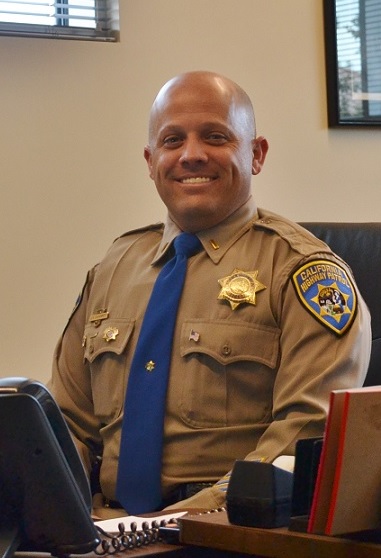 “By this time our own unit had developed a reputation as being willing to tackle any problem,” Daughrity recalls. “It quickly became apparent that we were probably the best suited to handle this because we had the investigative detail and the resources to do the job.”
“By this time our own unit had developed a reputation as being willing to tackle any problem,” Daughrity recalls. “It quickly became apparent that we were probably the best suited to handle this because we had the investigative detail and the resources to do the job.”
Daughrity had no doubt that his team was up to the task.
“I would put the seven investigators assigned to this detail up against any seven across the state, and had absolute, 100 percent confidence that we were the best there was.”
The investigators working under Daughrity will remain unidentified because they have, and will continue to work undercover.
“Those seven guys specialized in different skills sets. I couldn’t have asked for more multifaceted, multidisciplined people to come together. It was a dream team. Everybody had a particular strength, and those were identified quickly and used specifically for the purpose of this investigation.” And so they set to work.
When Daughrity arrived on scene, his detectives from the CHP Investigative Services Unit were already busy preserving and collecting evidence.
“There are little flakes of gold everywhere and there’s broken glass everywhere,” says Daughrity, who also observed gold nuggets every few paces across the floor. He then took a look at the security tapes which revealed that the crime at the museum was shocking in its violence and brevity.
“It was a quick takeover-style event,” says Daughrity, describing the scene at the time of the robbery.
 A museum curator was on duty at the desk and a secondary museum curator was on duty in a back room, when two individuals dressed in dark clothing with baseball caps and hoods pulled up over their heads entered the museum subversively, sneaked in with pickaxes, and went quietly around the corner into the vault.
A museum curator was on duty at the desk and a secondary museum curator was on duty in a back room, when two individuals dressed in dark clothing with baseball caps and hoods pulled up over their heads entered the museum subversively, sneaked in with pickaxes, and went quietly around the corner into the vault.
There, the thieves brazenly attempted to steal the museum’s prized possession: a one-of-a-kind gold cluster weighing in at more than 13 pounds, the invaluable Fricot nugget.
Video footage ultimately revealed the criminals swinging their pickaxes in what turned out to be a futile attempt to free the giant Fricot nugget from its impenetrable safe. When they found they couldn’t get the big gold, the desperate robbers turned instead to smashing glass display cases and grabbing anything they could get their hands on.
The museum employees saw the two men come out, one with a pickaxe, and the other saying, “I have a gun stay back.”
“The two are falling, tripping and stumbling, and they run out a side door and escape into the afternoon,” says Daughrity. “It’s daylight when this happens but nobody actually saw what they look like; nobody saw them come in or where they escaped to.”
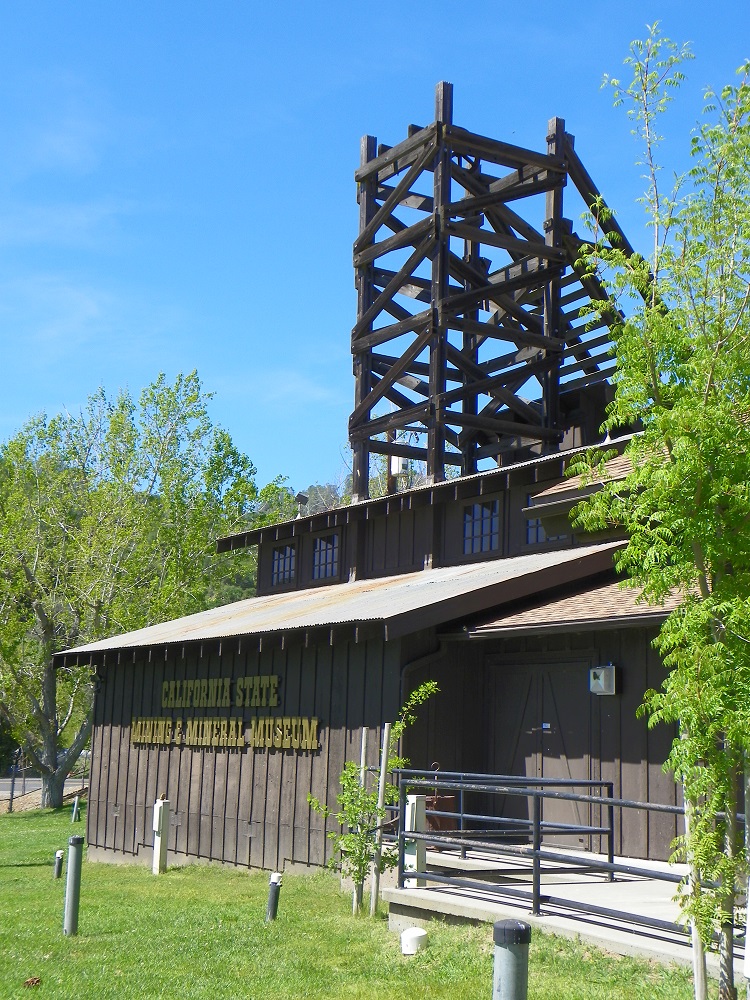 Right from the start, the crime had Daughrity shaking his head in disbelief and wonder, that anyone would attempt to steal a unique piece of history like the Fricot nugget.
Right from the start, the crime had Daughrity shaking his head in disbelief and wonder, that anyone would attempt to steal a unique piece of history like the Fricot nugget.
“Where are you going to offload this? Originally I’m thinking they would have to have a buyer for it, somebody who knew that they could never display it. It would have to be a personal collection piece, if that’s what motivated them.”
Daughrity had worked countless cases involving such crimes as auto theft, drug sales and firearms, but this one was way out of the box.
“This was so different; I had to stop and clear my head and ask myself – what are the most important things to be done in this particular instance?”
The answer: not only preserve and collect the evidence, but protect the public safety. And with no one in custody, investigators don’t know if these guys pose a danger to the public.
The CHP and other cooperating agencies worked quickly to secure the crime scene, take photographs, preserve evidence, canvas for witnesses, and get information on relevant calls from more possible witnesses or concerned citizens.
“In any criminal investigation your biggest enemy is time.The more time that passes, the more likely that you will not solve it, or that important elements in establishing the case are slipping past you.”
The video told them some of what they needed to know.
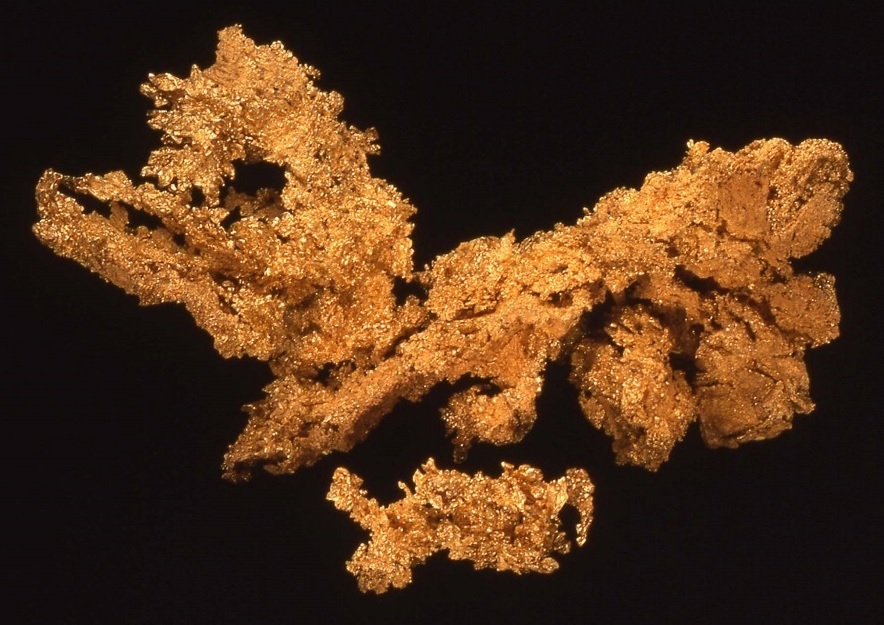 “We had two men. We couldn’t make out their faces because they were wearing flashlights on the bills of their hats. As they faced the camera the flashlight drowned out their image, and it was hard to tell who we had back there. Then, in the chaos of escape, one panicked, but the other was cool and calculated and able to divert from primary to secondary mission. The one who was cool as ice made us all wonder – who do we have here, and what are they capable of?”
“We had two men. We couldn’t make out their faces because they were wearing flashlights on the bills of their hats. As they faced the camera the flashlight drowned out their image, and it was hard to tell who we had back there. Then, in the chaos of escape, one panicked, but the other was cool and calculated and able to divert from primary to secondary mission. The one who was cool as ice made us all wonder – who do we have here, and what are they capable of?”
Based upon what they saw on the video, there was one thing of which investigators were certain concerning these particular robbers – this was not their first time committing this type of crime.
As detectives continued the task of collecting evidence, they covered every inch of the crime scene.
“When you are collecting evidence you start big and narrow down,” explains Daughrity. “We knew we had a focal point inside the museum, but we wanted to make sure we didn’t overlook anything from the outside, so we searched the entire building and the exterior perimeter. We started putting small clues together and slowly a timeline of events started to appear.”
As they talked to other law enforcement, they turned up something interesting – it turns out this robbery wasn’t the only crime committed in Mariposa that day. There had been a truck stolen up at the Pioneer Market, about 30 minutes before the museum was hit. There was video footage of the truck being taken, including images of the suspects’ own vehicle which was used in theft of the truck.
A short time later, patrol officers canvassing the area found the stolen truck off Mormon Bar Road, crashed into a ravine.
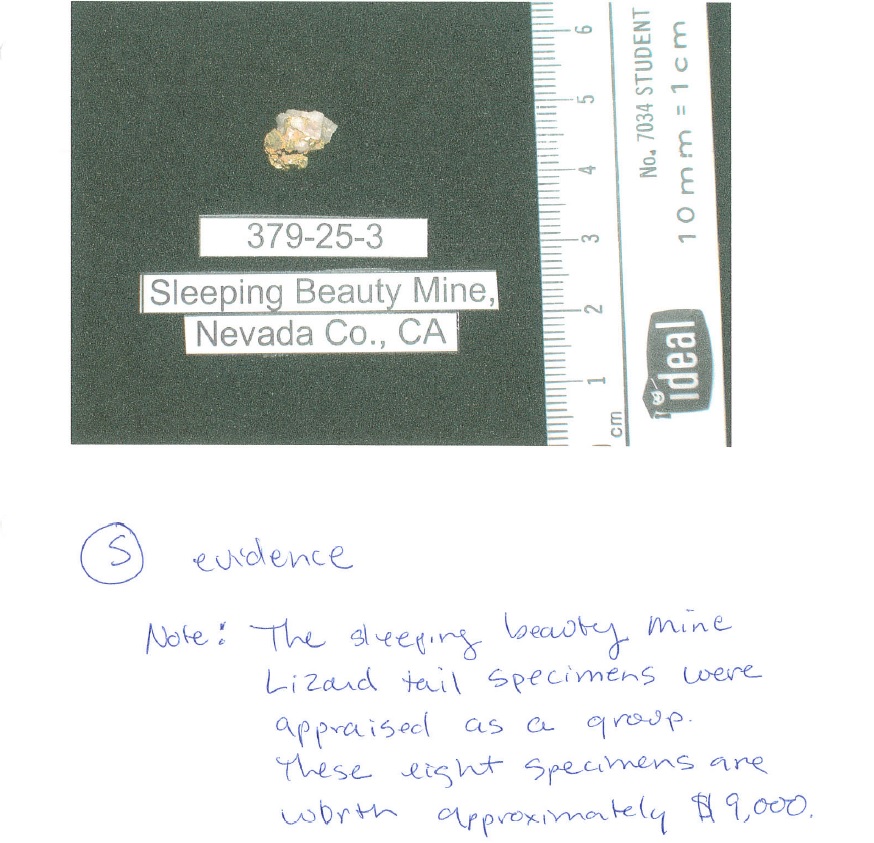 “That was the getaway vehicle,” says Daughrity. “So we started piecing the day together. The robbers come into town, they hit the Pioneer Market, they steal a truck and drive it over to the museum where they park it out back. They are a couple of nondescript individuals who look like tourists. They come in, commit the robbery, escape out the front door and get into the waiting truck, then flee down to Mormon Bar. They put the vehicle in the ravine, clean it out, jump into the getaway car, and take off.”
“That was the getaway vehicle,” says Daughrity. “So we started piecing the day together. The robbers come into town, they hit the Pioneer Market, they steal a truck and drive it over to the museum where they park it out back. They are a couple of nondescript individuals who look like tourists. They come in, commit the robbery, escape out the front door and get into the waiting truck, then flee down to Mormon Bar. They put the vehicle in the ravine, clean it out, jump into the getaway car, and take off.”
With that timeline laid out, they talked to witnesses at the museum who provided invaluable and detailed information to investigators.
“Having victims who are capable of keeping their heads about them and relaying good information to law enforcement is beneficial beyond words, and we had great witnesses.”
Those witnesses also steered investigators toward some “tourists” who had been in the museum about a week earlier.
“We did have two guys come through here that were tourists, but they just gave us a funny feeling,” they told detectives. “Taking pictures of stuff that really didn’t seem to matter. They came in and hustled about, and they didn’t seem to care what they were looking at.”
Reviewing video footage from the week prior, Daughrity and his team realized something important.
“This tourist isn’t really much of a tourist, this guy is casing this place,” says Daughrity.
So they determined that their suspects had a practice run – they came through, stole a truck, stole a car, went to the museum, cased the place and left.
“That first time they may have intended to commit the theft, but they got cold feet, and came back a week later and pulled it off.“
Now the investigation that started at 4 p.m. Friday, was well into Saturday morning, and 16 hours of detective work at multiple crime scenes was starting to pay off.
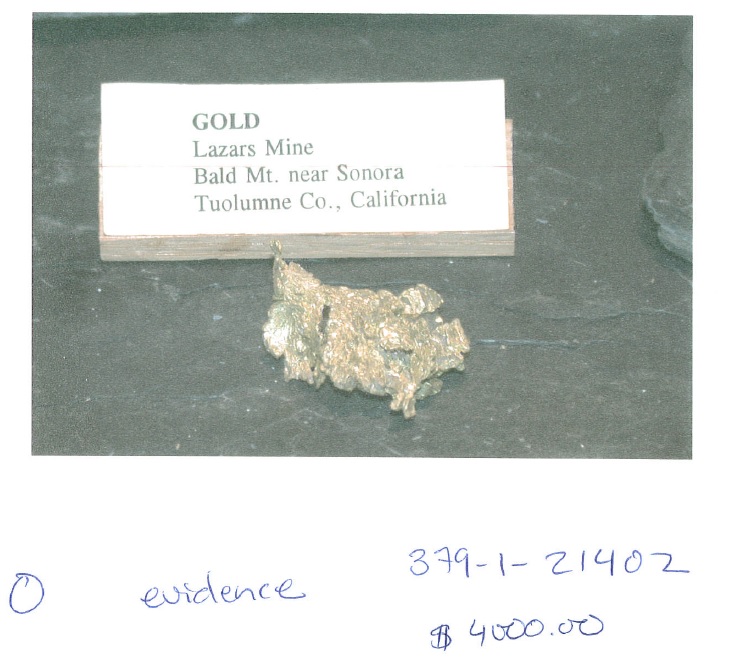 “Things start to show up – fingerprints, latent evidence, forensic evidence – from a couple different locations. These guys weren’t very careful and they made some mistakes along the way. There was no mystery about what they were there to do.”
“Things start to show up – fingerprints, latent evidence, forensic evidence – from a couple different locations. These guys weren’t very careful and they made some mistakes along the way. There was no mystery about what they were there to do.”
With this case now assigned to the team as their top priority, they worked with curators at the museum to determine precisely what had been taken. Museum staff reviewed catalogs for quantities and values, along with their own impeccable records, knowing that nothing could ever replace what had been lost.
“The chances of finding any specimens like these again is highly unlikely, if even possible,” says Daughrity. “They were incomprehensibly valuable.”
So what had gone missing? Having failed to abscond with the Fricot nugget, the robbers took pieces from a collection that included quartz with small gold veins, gold nuggets, and unique specimens found throughout the local region. The precious minerals were determined to have a tremendous historical value, much greater than the value of their content weight on the open market.
As word spread of the brazen heist, residents in Mariposa were quickly up in arms over the robbery of their treasured museum.
“People wanted justice to be served,” says Daughrity. “It’s a precious local resource and it was very personal to a lot of people. It’s a big crime in a small town, and people were fired up. There were email comments about tall trees and short rope.“
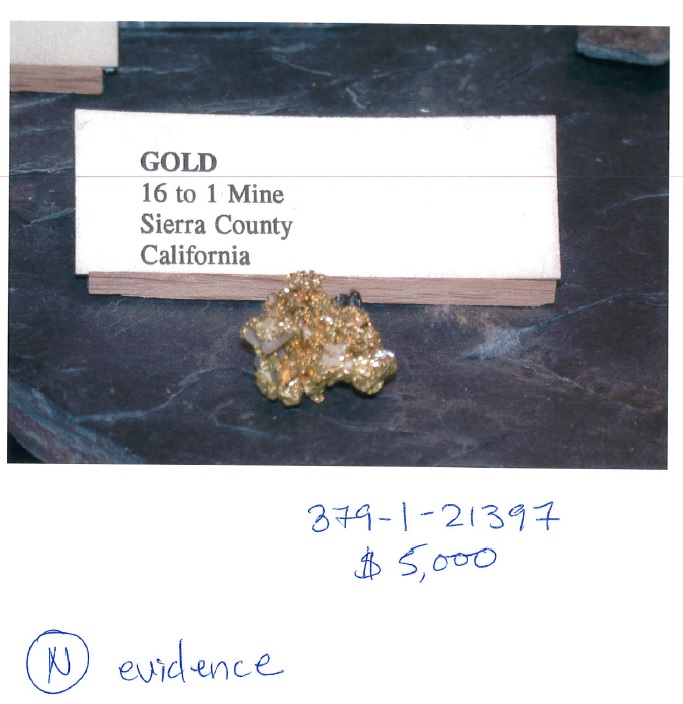 The Mariposa County Board of Supervisors kept close tabs on how the investigation was progressing, local District Attorney Tom Cooke was intimately involved in the case from the beginning, and the Mariposa County Sheriff’s Office was there to assist in any way they could.
The Mariposa County Board of Supervisors kept close tabs on how the investigation was progressing, local District Attorney Tom Cooke was intimately involved in the case from the beginning, and the Mariposa County Sheriff’s Office was there to assist in any way they could.
Since the crime was obviously premeditated, detectives theorized that they were dealing with as-yet-unknown suspects who had committed crimes before, and they began looking at databases.
“We have somebody with a pattern, somebody with a history. So the chances of fingerprints – of them being known or having been incarcerated before – are very high.”
They submitted numerous items for forensic analysis, including fingerprints, blood evidence, sweat evidence and DNA samples. They also set up an information tip line to ask for help from the public. The result was an entire ream of paper devoted to printing out tips coming in from citizens, yet it took only one tiny bit of information to get the officers looking in the right direction for these thieves who had disappeared into broad daylight.
DNA pointed the finger at one Christopher Scott Sheffield of Georgetown, Calif. Finally, a break. Sheffield was already in custody for a DUI crash and drug violations in El Dorado County. He was identified within a week of the robbery.
“From there on it was just a rocket ride,” recalls Daughrity.
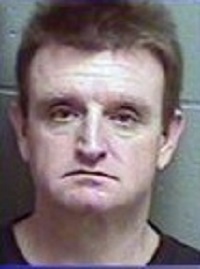 Once they were able to identify Mr. Sheffield, investigators started tracking him back in time, and found others through “link analysis,” which is basically suspects knowing suspects.
Once they were able to identify Mr. Sheffield, investigators started tracking him back in time, and found others through “link analysis,” which is basically suspects knowing suspects.
“Then, the doors started flying open fast,” says Daughrity. “Link analysis and suspect identification techniques are at the strongest they’ve ever been. Information is put into databases that link into master databases that store reports from every agency that participates. We had a huge pool of names and people to work through,” which they did throughout October and into the first week of November, with each team member focusing on a specific part of the investigation.
The lead investigator’s main task was compiling the information collected into something they could reasonably present to District Attorney Cooke – reports, narratives, and documents. Daughrity, meanwhile, was overseeing forensic evidence and technological data, including satellite tracking, and working with the allied agencies.
One investigator was an expert at interviewing and interrogation, possessing what Daughrity calls the “gift of gab.” Another was well connected to networks that aren’t necessarily connected to law enforcement, but can reveal critical information when tapped.
The district attorney was determined to charge the suspects with the maximum allowed, and told detectives what he needed in order to accomplish that mission. Everyone was laser-focused on identifying co-conspirators and building a case against them.
“Knowing something and proving it are two different things,” says Daughrity. “We’ve got to be able to prove beyond a reasonable doubt, in a court of law, that these guys did it.”
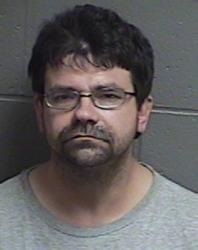 They now had five suspects across an area that reached from Mariposa up into the Mother Lode region of El Dorado, Sutter, and Yuba Counties.
They now had five suspects across an area that reached from Mariposa up into the Mother Lode region of El Dorado, Sutter, and Yuba Counties.
Detectives searched for clues in gold and pawn shops up and down the state. In the intimate world of precious metals, they were told, “gold doesn’t travel anonymously; the nuggets haven’t walked in, and if they do, you’ll know it.”
Meanwhile, detectives started looking at similarly styled crimes, including a gold store robbery in Sacramento. In that heist and others, the modus operandi was very similar, and soon, CHP detectives were linking their suspects to other crimes being actively investigated by other agencies.
In the Sacramento burglary, the perpetrators stole a truck, crashed it through a gate, gained entrance through the back of the store, defeated the safe and made off with a load of gold. That stolen truck was recovered in Yuba County, close to where some of the Mariposa suspects lived.
CHP investigators now had the satisfaction of sharing their information with other agencies, assisting them in solving their open cases, and taking down the bad guys for more than just the Mariposa heist.
Daughrity and his team had their suspects in their sights, and the time had come to take them down.
They crafted a master plan that included establishing a narcotics case, which would permit a search warrant on which to build a case for yet another search warrant. With all the suspects staked out, Daughrity still didn’t know if they would be able to recover any of the stolen gold.
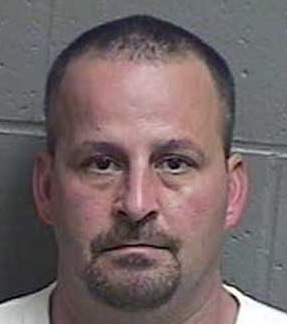 On the day of the takedown, some 50 officers from multiple agencies were staged at the various locations, ready to grab three different suspects at the same time.
On the day of the takedown, some 50 officers from multiple agencies were staged at the various locations, ready to grab three different suspects at the same time.
“These guys were presumed to be dangerous by the nature of their crimes,” says Daughrity, “and their criminal histories substantiated our concerns.“
Teams were assembled and ready to roll – one outside Placerville, one in Rio Linda, and a third at the Sacramento River where one of the suspects lived on a houseboat. Daughrity himself was staked out at the home of the suspect who appeared to be the mastermind in the case. The homes were raided and searched for evidence related to the crime. Good evidence was found at all three locations, tying the suspects into the Mariposa robbery and narcotic sales, within their respective counties of residence.
After weeks of diligent detective work, the operation was a success, and the suspects were taken into custody without serious incident. Now, it was time to see what could be recovered and returned to the museum. The reality was not what they had hoped for.
“That day we did find gold, and that was a big relief,” sayd Daughrity. “But we didn’t find nearly enough; not even close to what had walked away the day of the robbery.”
Instead, searches of the properties revealed only small fragments, and a soapy solution with dirt and gold residue on the bottom. The artifacts had been destroyed. Larger-than-golf-ball-sized pieces of quartz containing veins of gold had been whacked with a hammer on a hard surface until they fell apart, leaving quartz dust and pieces fragmented and scattered.
 “They tried to separate it in a soap solution, but they are not jewelers,” Daughrity says. “They were like cavemen trying to do gold recovery, and everything they tried to do just broke it apart. They tried putting the items into pots and Tupperware and breaking it down with soap and different liquids. All that did was take the dirt off the gold. Unfortunately, the end result was that we did not recover the amount of gold that was taken, and likely never will, because who knows where it ended up.”
“They tried to separate it in a soap solution, but they are not jewelers,” Daughrity says. “They were like cavemen trying to do gold recovery, and everything they tried to do just broke it apart. They tried putting the items into pots and Tupperware and breaking it down with soap and different liquids. All that did was take the dirt off the gold. Unfortunately, the end result was that we did not recover the amount of gold that was taken, and likely never will, because who knows where it ended up.”
Daughrity says the fact that these bad guys weren’t caught sooner is just plain luck on their part, and had nothing to do with skill.
“All but one had a criminal history,” he says. “They were burglars and armed robbers, but not very good at being criminal masterminds. They left too many holes in their game, and when you put good, dedicated investigators on a case, who are determined to find them, we are going to find them and bring them to justice.”
All five suspects were sentenced depending on their prior felony convictions, and all were sent to prison. Despite the lack of viable gold recovered, investigators consider the outcome a success.
“The public wasn’t subjected to other incidents of this type during the length of the investigation, as the suspects decided to lay low after September 28,” says Daughrity. “Also, we had a peaceful outcome while helping to solve other major related cases throughout the state.”
Ultimately the CHP investigators who solved this case were commended by the Commissioner of the California Highway Patrol, who bestowed on them the CHP’s highest commendation, the Commissioner’s Unit Citation.
Judge Wayne Parrish handed down the sentences in Mariposa County Superior Court to this cast of characters:
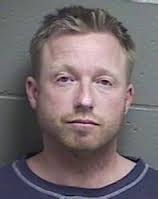 Christopher Scott Sheffield, 44, was part of the dry-run. He was in already in police custody when investigators received critical physical evidence placing him at the museum a week before the bigger crime.
Christopher Scott Sheffield, 44, was part of the dry-run. He was in already in police custody when investigators received critical physical evidence placing him at the museum a week before the bigger crime.
Early link analysis of Sheffield’s whereabouts helped detectives find the others. He wasn’t there the day of the actual robbery, but for his part in planning beforehand, Sheffield was convicted on two felony charges including grand theft, attempted burglary, and conspiracy to commit a crime. Sheffield was sentenced to 5 years and 4 months.
Matthew Campbell, 45, played the part of the tourist taking pictures and casing the joint in the week before the robbery. Prior to the events surrounding the museum heist, Campbell had no record at all, and it’s said he was not present the day of the robbery, either. Still, he stole two vehicles and participated in the dry-run. Charges against him included auto thefts, robbery and arson. Campbell agreed to testify and was given probation.
Anthony Michael Gomes, 45, of Citrus Heights, was the robber who couldn’t keep his cool when things went wrong during the commission of the crime. Before the robbery, Gomes had two convictions for drugs but no strikes against him. As part of a deal with the prosecution, Gomes made statements that implicated others in the crime. He ultimately pled guilty to attempted burglary and auto theft for the dry-run caper the week prior to the robbery, along with charges the day of, including auto theft, grand theft, 2nd degree burglary and two counts of assault with a deadly weapon. Taking his cooperation into consideration, the judge sentenced Gomes to 5 years and 4 months in the Department of Corrections.
Jonathan Matis, 43, was the car thief. The Sutter County man pled guilty to auto theft, grand theft from a person, and robbery, and was sentenced to 6 years in prison.
Edward Rushing III, 43, of El Dorado County, was said to be the ringleader who managed to remain calm during the chaos in the museum. He appeared to be a fairly accomplished criminal, having been actively breaking the law throughout his life. Rushing refused to cooperate with investigators and arrived at the table with a strike against him already. He was convicted of auto theft, arson and two counts of robbery, and was sentenced to 15 years in prison.
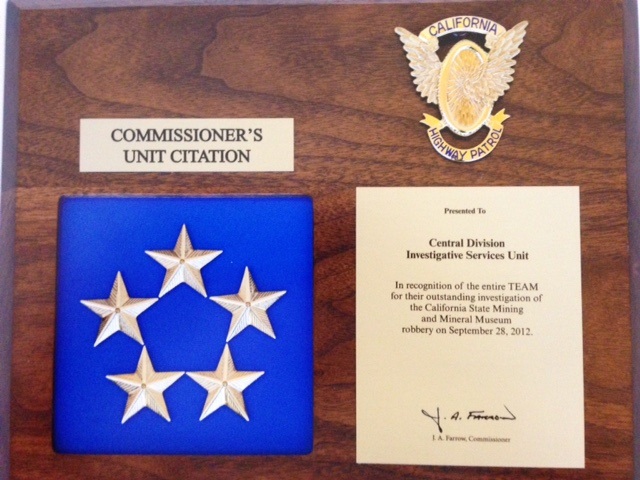 All of the perpetrators were ordered to pay restitution including the value of the stolen objects, along with damages and loss. The gold and minerals value charged to the thieves was $1,105,000. Damages were claimed at $17,572.77. The loss of a vehicle added another $1,460. The total amount of restitution charged against the criminals was $1,124.040.93.
All of the perpetrators were ordered to pay restitution including the value of the stolen objects, along with damages and loss. The gold and minerals value charged to the thieves was $1,105,000. Damages were claimed at $17,572.77. The loss of a vehicle added another $1,460. The total amount of restitution charged against the criminals was $1,124.040.93.
Daughrity has no doubt the crime wasn’t worth the time.
“They went through a lot of effort,” he says. “You could get a lot more money doing other things. If you’re going to commit a crime, particularly a felony, stealing gold doesn’t have the rewards for the risk you’re facing. They were professional thieves but not professional criminals.They left too many holes in their game.”
Mariposa County District Attorney Tom Cooke agrees that the CHP did a wonderful job of solving the case, and says the investigators were among the best he’s seen.
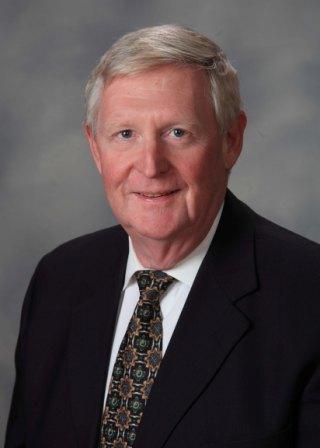 “They are stellar professionals who doggedly worked the crime, and it’s great to be able work with law enforcement demonstrating that kind of expertise,” says the District Attorney. “Without them, we would never even have gotten close.”
“They are stellar professionals who doggedly worked the crime, and it’s great to be able work with law enforcement demonstrating that kind of expertise,” says the District Attorney. “Without them, we would never even have gotten close.”
The 2012 robbery at the California State Mineral and Mining Museum turned out to be one of the most curious and convoluted cases Daughrity has worked to date.
“We were originally thinking that somebody wanted these items for a very specific reason, but as it turned out, it wasn’t for a collector,” he says. “These were people that wanted gold. In the end they just ended up destroying artifacts, busting these nuggets apart, and leaving behind broken rock. There wasn’t anybody involved who wanted them in their original state. These were selfish people, motivated by greed, and they simply wanted the gold.”

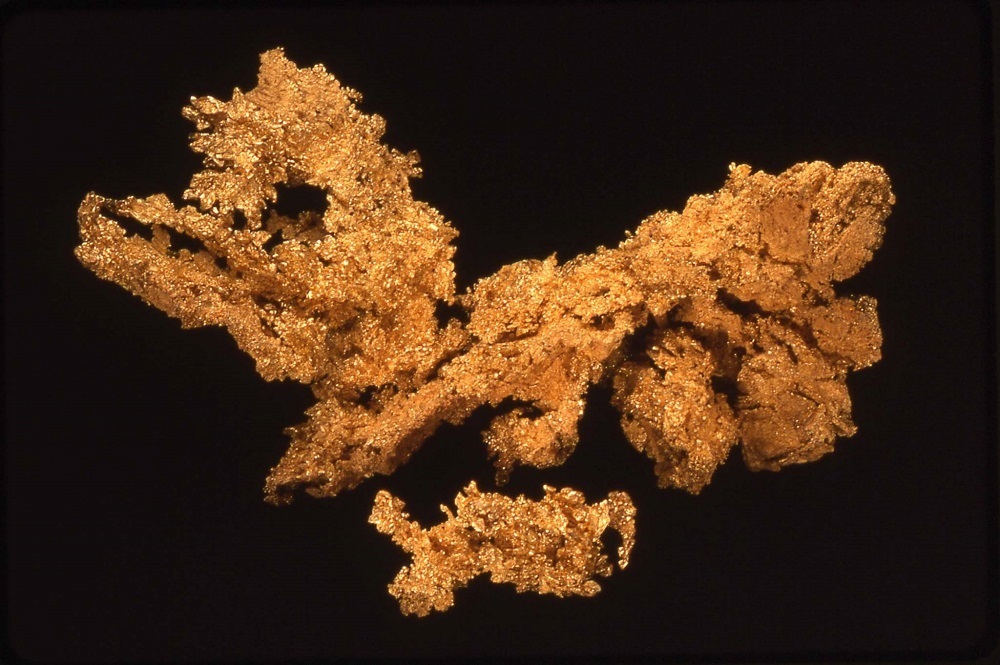



As a retired San Diego Co. Deputy Sheriff I can say that this CHP crew spent a lot of time & effort until some arrests were made. Well done.
Kudos to Kellie too for an excellent, well written, and detailed reporting effort rarely seen these days.
I wondered what happened and if they ever found them. Good job and very nice reporting.
I hope Californians will donate to help replace the stolen items. Sadly much can’t be replaced but some can. Get a security system!!!